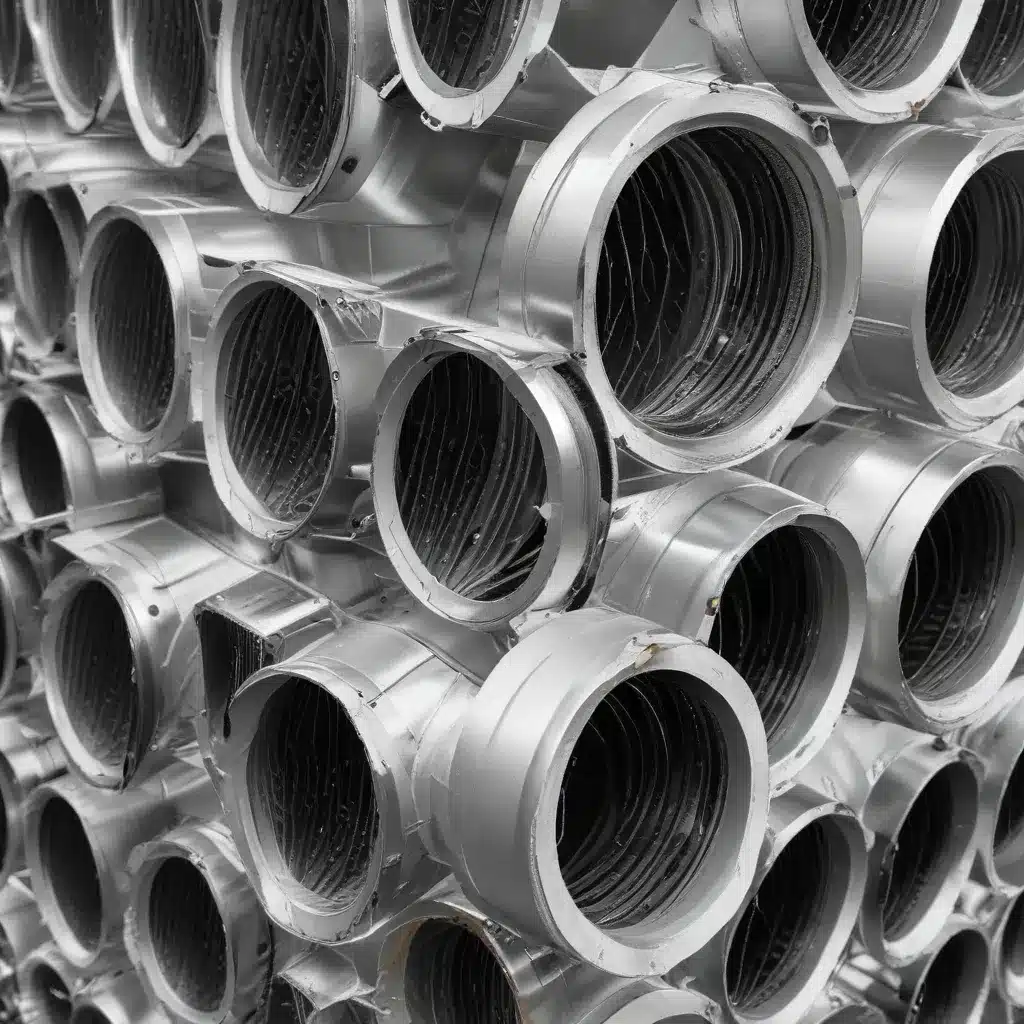
The Challenges of Thermal Cycling in Air-Cooled Heat Exchangers
Air-cooled heat exchangers play a critical role in a wide range of industrial processes, from power generation and petrochemical refineries to HVAC systems and data centers. These workhorses of the thermal management world are designed to efficiently transfer heat from one fluid (typically a gas or liquid) to another, usually ambient air. However, one of the key challenges faced by air-cooled heat exchangers is their susceptibility to thermal cycling, which can significantly impact their long-term performance and reliability.
Thermal cycling occurs when the heat exchanger is subjected to rapid and repeated changes in temperature, causing the materials to expand and contract. This repeated mechanical stress can lead to fatigue, cracking, and even premature failure of the heat exchanger components, particularly the tubes, headers, and other structural elements. In industries with variable or intermittent loads, such as power plants or data centers, thermal cycling is an ever-present concern that must be addressed to ensure the resilience and longevity of these critical assets.
Tackling Thermal Cycling with Advanced Materials and Coatings
To improve the resilience of air-cooled heat exchangers to thermal cycling, engineers and material scientists have been exploring a range of advanced materials and coatings. These innovative solutions aim to enhance the heat exchanger’s ability to withstand the stresses of thermal cycling while maintaining high thermal efficiency and durability.
Corrosion-Resistant Superalloys
One promising approach is the use of corrosion-resistant superalloys, such as Inconel or Hastelloy, for the heat exchanger tubes and other critical components. These nickel-based alloys possess exceptional strength, corrosion resistance, and thermal stability, making them highly resistant to the mechanical stresses and thermal cycling experienced in air-cooled heat exchangers.
Superalloys like Inconel can significantly improve the thermal cycling resilience of air-cooled heat exchangers. Compared to traditional materials like carbon steel or aluminum, superalloys exhibit superior creep resistance, fatigue life, and resistance to oxidation and thermal degradation. This allows air-cooled heat exchangers to withstand the rigors of thermal cycling with minimal impact on their performance and longevity.
Ceramic Coatings for Enhanced Thermal Barrier
Another innovative solution involves the application of advanced ceramic coatings to the heat exchanger surfaces. These coatings, such as those made from zirconia or alumina, act as thermal barriers, insulating the underlying metal from the rapid temperature changes experienced during thermal cycling.
Ceramic coatings can significantly improve the thermal cycling resistance of air-cooled heat exchangers. By reducing the thermal stresses on the metal components, these coatings help prevent cracking, warping, and other forms of thermal fatigue. Additionally, the ceramic materials offer enhanced corrosion and erosion resistance, further extending the service life of the heat exchanger.
Composite Materials for Lightweight Durability
In addition to superalloys and ceramic coatings, the use of advanced composite materials is another strategy for improving the thermal cycling resilience of air-cooled heat exchangers. Composite materials, such as carbon fiber-reinforced polymers (CFRP) or glass fiber-reinforced polymers (GFRP), can be engineered to have high strength-to-weight ratios, excellent thermal management properties, and superior resistance to thermal cycling-induced damage.
Composite materials offer a unique advantage in air-cooled heat exchanger design. By incorporating these lightweight, yet durable materials, engineers can create heat exchangers that are more resistant to thermal stresses while also reducing the overall weight and footprint of the system. This can be particularly beneficial in applications where space and weight constraints are critical, such as in the aerospace or transportation industries.
Optimizing Thermal Cycling Resilience through Integrated Design
To fully capitalize on the benefits of advanced materials and coatings, air-cooled heat exchanger design must take a holistic, integrated approach. By considering the synergistic effects of different materials, coatings, and component geometries, engineers can optimize the heat exchanger’s performance, durability, and resilience to thermal cycling.
This integrated design approach may involve:
- Strategically placing superalloy components in high-stress regions of the heat exchanger to mitigate fatigue and cracking.
- Applying ceramic coatings selectively to the most vulnerable surfaces, providing targeted thermal barrier protection.
- Incorporating composite materials in the heat exchanger structure to reduce weight and enhance overall mechanical integrity.
- Developing advanced numerical models and simulation tools to predict the thermal and mechanical behavior of the heat exchanger under various operating conditions.
By embracing this holistic design philosophy, air-cooled heat exchanger manufacturers and operators can unlock new levels of resilience, ensuring that these critical assets continue to perform at their best, even in the face of challenging thermal cycling environments.
Investing in the Future of Air-Cooled Heat Exchanger Resilience
As the world continues to demand ever-greater efficiency, reliability, and sustainability from industrial thermal management systems, the need for air-cooled heat exchangers that can withstand the rigors of thermal cycling has never been more pressing. The innovative use of advanced materials, coatings, and integrated design approaches represents a promising path forward, empowering engineers and operators to build a more resilient and future-proof generation of air-cooled heat exchangers.
The U.S. Department of Energy’s recent $38.8 million investment in building technology research and development underscores the importance of this pursuit. By supporting the development of high-impact technologies, including those that enhance the resilience of HVAC systems and other building equipment, the DOE is paving the way for a more sustainable and reliable built environment.
As the experts at https://www.aircooledheatexchangers.net/ continue to push the boundaries of air-cooled heat exchanger design and engineering, we remain committed to sharing our insights and practical guidance with industry professionals. By staying at the forefront of materials science, thermal management, and maintenance best practices, we can help ensure that air-cooled heat exchangers remain a cornerstone of energy-efficient and resilient industrial and commercial systems for years to come.

